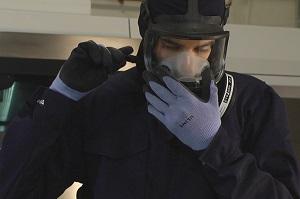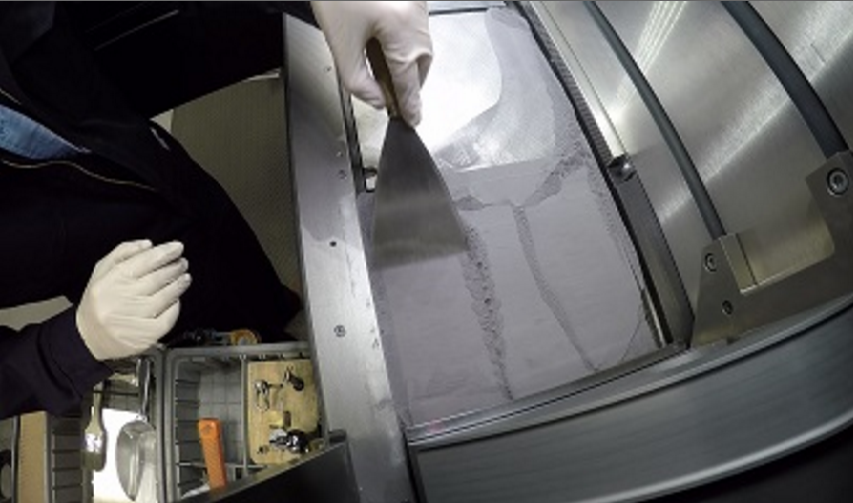 It’s always great getting in on something when it’s brand new. It’s like being part of a secret club—with the rules being made up as you go. 3D printing, while certainly more in the mainstream than previous years (if being able to buy a 3D printer at Sam’s Club signifies anything), is still largely uncharted on so many levels from actual innovating and the transformations in manufacturing, to intellectual property issues and business practices. Never mind about all the fun we’ve been having making stuff—let’s take some time out to worry!
It’s always great getting in on something when it’s brand new. It’s like being part of a secret club—with the rules being made up as you go. 3D printing, while certainly more in the mainstream than previous years (if being able to buy a 3D printer at Sam’s Club signifies anything), is still largely uncharted on so many levels from actual innovating and the transformations in manufacturing, to intellectual property issues and business practices. Never mind about all the fun we’ve been having making stuff—let’s take some time out to worry!
While thinking about that next cool concept you are ready to get into digital form and on down the line to the 3D printer has you jumping, the reality is that before you gulp in another excited breath, you need to make sure you’re accounting for good ventilation—and if using ABS, as much as possible. We’ve been spending a lot of time lately following up on this subject after publishing information from a recent research study performed by University of Texas researchers. Since, other companies have weighed in on this issue, regarding ABS vs. PLA, like MakerBot and ALGIX 3D.
 While we were all busy shooting dirty looks at the spools of ABS however, no one had much to say about metal powders and 3D printing. As many companies begin taking 3D printing from the designing studio and into more formal factory-like atmospheres, however, the question of safety erupts—after all, safety measures are in place for most every other processes. What about 3D printing, and metal in particular?
While we were all busy shooting dirty looks at the spools of ABS however, no one had much to say about metal powders and 3D printing. As many companies begin taking 3D printing from the designing studio and into more formal factory-like atmospheres, however, the question of safety erupts—after all, safety measures are in place for most every other processes. What about 3D printing, and metal in particular?
The mega-corporations like GE are indeed beginning to put safety measures in place, as obviously it’s a matter of common sense to think if ABS emissions may be an issue, metal powder certainly brings up questions.
“We understand that there are unknown dangers to powders,” says Ed Tackett, director of education programs at the new UL Additive Manufacturing Competency Center at the University of Louisville. “We don’t know what the long-term effects of exposure to these powders are.”
While the unknown factor regarding invisible toxins wafting through the air and into our nasal passages is slightly terrifying enough, there are definite and real dangers such as the actual metal in the powder getting into the eyes and into open cuts in the skin. With all of this in mind, Tackett recommends that anyone near 3D printing practices in their center wear a fireproof lab coat, eye protection and 5 mil nitrile gloves. He points out that wearing protective gear is essential when the machines are being restocked, requiring operators to open a ‘wide-mouthed canister’ and pour it inside of the industrial metal 3D printer. Currently there doesn’t seem to be any other way to restock, and Paul Bates, general manager of ULMCC services, points out that he foresees much more contained practices in the future.
“Personally, no matter what machine is running, I wear a p100 myself,” Tackett says of a face piece that filters out at least 99.97% of airborne particles 5 microns and larger. “No one touches a machine or opens a tray without a respirator on.”
It’s only logical to consider that toxins and particles are lurking in many places we don’t consider; for example, contractors may be exposed later even to the powder when they are performing post-processing work on components.
“You can’t just look at your process internally,” he says. “You have to look downstream.”
 While worrying about fumes and carcinogenic fine particles being inhaled via ABS and other 3D printing filaments seems like enough to provoke anxiety, metal 3D printing involves much greater dangers, such as:
While worrying about fumes and carcinogenic fine particles being inhaled via ABS and other 3D printing filaments seems like enough to provoke anxiety, metal 3D printing involves much greater dangers, such as:
- Poisoning due to oxygen misplacement – argon and nitrogen gas are a danger here, and especially with many machines packed together, and little ventilation. Tackett points out that as argon and nitrogen displace oxygen, the hazards associated with carbon monoxide are present. Because of this, O2 monitoring is crucial.
- Static electricity and fire – this is a huge concern, according to Bates, who recommends multiple safety factors be put into place to avoid a disaster. A special fire extinguisher is required for metal powders, as well as the use of a special technique. This is a specific safety issue that must be considered and requires both planning and training. According to the team, a hard shell is created when the sodium chloride in the required D-type extinguisher is exposed to heat. Operators must know to spray down on the metal fire, rather than the traditional side-to-side movement.
To reduce the hazard of fire, the team recommends:
- Machines being static grounded
- Anti-static mats should be used, and be grounded to the machine’s frame
- Statically grounded vacuum cleaners should be used
- Anti-static coating should be applied to floors
- Everyone should wear anti-static shoes
- Investing in a Class D fire extinguisher, to kept near metal 3D printing machines
“Any time you’re going to put in an additive manufacturing system, site preparation and site safety are paramount. As AM emerges to a front line manufacturing technique, I think somebody really needs to take a leadership position as far as safety, personal protection and training,” says Tackett.
“We certify operators for CNC machines, we should train for AM.”
The UL experts also point out how important it is to have Material Safety Data Sheets up to date and front and center so that everyone has access to them. Training should be required for everyone operating the metal 3D printers as well. While a lot of this is common sense and many companies are quickly getting up to speed, it’s important for everyone to have safeguards in place for their health—especially when they are exposed on a daily basis. It’s certainly better to be safe than sorry, and wait until a problem crops up to put measures into place. Discuss these concerns in the 3D Metal Printing Safety forum over at 3DPB.com.
[Source: Manufacturing Engineering]Subscribe to Our Email Newsletter
Stay up-to-date on all the latest news from the 3D printing industry and receive information and offers from third party vendors.
You May Also Like
3D Printing Financials: Desktop Metal Targets Recovery Amid Net Losses and Revenue Downturn
Despite facing a decline in revenue and the persistent challenges of a tight economic climate, Desktop Metal (NYSE: DM) is making strides toward operational efficiency. The first quarter of 2024...
3YOURMIND & Nigerian Oilfield Services Firm RusselSmith Team Up on 3D Printed Part Inventory
3YOURMIND, the German and U.S. software services provider specializing in digital inventory platforms for additive manufacturing (AM), has partnered with Nigerian oilfield services firm RusselSmith to digitize spare part files...
Who is Endeavor 3D?
You may be familiar with our company, Endeavor 3D, or perhaps not. Located in Metro Atlanta, we are a contract additive manufacturer (AM) equipped with polymer 3D printing, stainless steel...
Titanium Powder Supplier IperionX Completes HAMR Furnace Installation at Virginia Campus
IperionX, the Charlotte-based manufacturer and supplier of US-sourced titanium products, has installed the Hydrogen Assisted Metallothermic Reduction (HAMR) furnace at its Titanium Manufacturing Campus in South Boston, Virginia. The company...
































